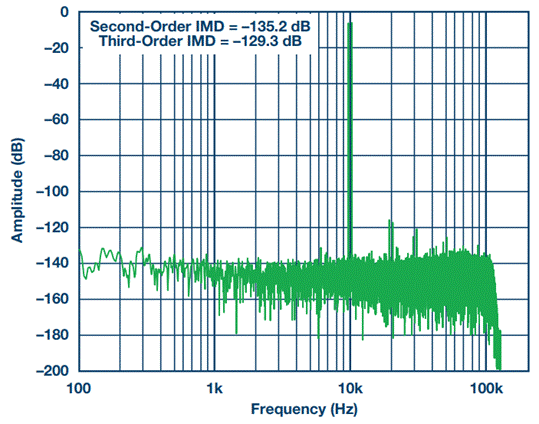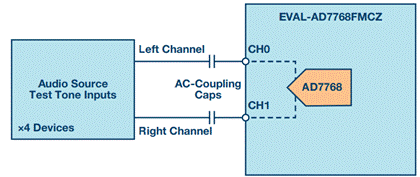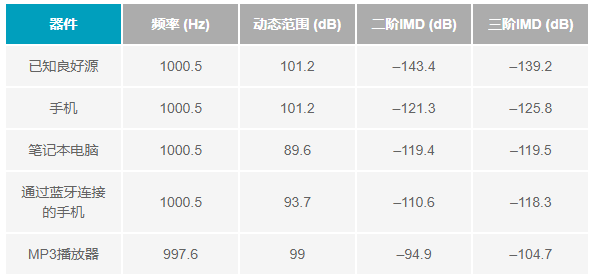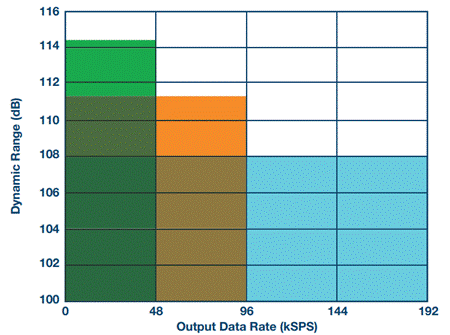Nowadays, almost every personal electronic device has integrated audio function. No matter in busy urban streets or rural areas, people of different ages can be seen doing daily affairs while listening to music. In the past five years, the absolute number of audio equipment has jumped to astronomical figures. The media sources that ordinary consumers can access are much wider than before, and the types of devices used to view and play content are also more diverse. This digital media explosion is the result of the increasing use of mobile phones, tablets, laptops and Bluetooth speakers worldwide. Many homes have these devices, or at least some of them.
Today‘s consumers are used to high fidelity audio transmission. The era of electrostatic noise and interference distortion in audio systems is gone forever. At the same time, there is a trend that audio playback will be transferred to the cloud. Now there are many streaming media services competing for audiences. They all provide high fidelity music, and the price is only a fraction of the collection of CDs. This means that each of us will listen to all kinds of online music, audiobooks and podcasts through various media. The absolute number of audio modules also leads to an increase in the demand for audio test platforms; The audio test platform should not only be able to provide a variety of functions flexibly, but also have high fidelity performance.
Looking forward to the future, the general trend of technology development is that the basic technology does not change much, but the final product will be continuously improved to achieve better performance. This trend also applies to the audio field. Larger storage space, higher processing capacity, accuracy, clarity, and smaller size will become universal demands. This trend is manifested by the fact that higher quality audio is more and more popular with ordinary listeners. In the application field, one example that is expected to promote the growth of demand for high-quality audio systems is speech recognition and voice commands. From voice search of intelligent devices to home automation systems, this technology will be applied. In order to enable intelligent devices to distinguish user instructions from noisy environments, high-quality hardware must be used. The key indicators of such systems are the achievable dynamic range and the ability to filter noise and interference. Applications such as video conferencing, virtual telepresence and virtual reality all require that background noise be suppressed to a low level to improve user experience.
Design challenge
The increase in the absolute production of audio modules has also created a "pain point" for manufacturers: how to test each device quickly and efficiently while ensuring its performance without discount? From the perspective of the equipment manufacturer, it is obvious that increasing the execution speed of the test will reduce the cost. However, the quality of the final product cannot be affected. After understanding these requirements, the key to designing an audio test platform for modern audio equipment lies in the following two points: on the one hand, we hope to improve the performance, and on the other hand, we hope to perform tests at a rare speed. The audio test platform needs to achieve a lower level of noise and distortion in order to quickly and accurately measure the equipment under test.
The gap between the needs of ordinary consumers and the needs of professional studio equipment is becoming smaller and smaller. For example, consumers generally prefer higher quality and more sophisticated earphones. It will be very useful to have a fully applicable audio test platform. Typical CD sound quality requires a dynamic range of 92 DB to 96 dB, while analog microphones and professional audio require a dynamic range of more than 120 dB. To meet future needs, the audio test platform needs to cover a wider dynamic range, and have faster test time and higher test throughput. The ideal positioning of this audio testing platform is not only to meet the current consumer demand, but also to adapt to the future trend towards higher fidelity systems.
Looking for solutions
To find a universal solution, you may encounter many design challenges. In order to incorporate these requirements into the modern audio testing platform, test system designers need to overcome many constraints. Some of these constraints include system cost, design size and power consumption. In many cases, the performance of the system is determined by the device performance limits related to the capital budget or the thermal budget. ADI‘s multi-channel 24 bit Σ- ∆ type adc-ad7768 can help overcome the above common limitations. The device is available in 4-channel and 8-channel versions. It has excellent signal to noise ratio (SINAD) performance and many other characteristics, and is very suitable for audio testing.
Applicability of ad7768 / ad7768-4 24 bit ADC
24 bit (and above) ADCs are generally used for high fidelity audio equipment in the field of audio testing, because their 24 bit accuracy can achieve a wider dynamic range. To ensure signal integrity, low distortion and excellent noise resistance are necessary. ADI‘s new 24 bit Σ- ∆ type ADC, namely ad7768, can provide high-quality noise and thd performance in its eight channels, and the output data rate can be adjusted according to the audio bandwidth. This makes it an ideal device in the audio field. The typical value of thd performance is – 120 dB.
The ad7768 / ad7768-4 broadband, low ripple digital filter is also suitable for audio applications. It supports six different extraction rates, and users can flexibly select according to the target bandwidth. The stop band attenuation of the ad7768 is 105 dB, which provides a steep brick wall frequency response while keeping the target signal unchanged and reducing the noise to a low level.
Ad7768 / ad7768-4 adapts to the capability of the audio test platform, making it a prominent pillar of the audio test platform. The development of instrument to modularization and miniaturization has become the trend. The ad7768 / ad7768-4 integrates multiple channels, enabling the system to reduce size and increase channel density. While testing multiple devices at the same time, ad7768 / ad7768-4 has the ability to keep the crosstalk between channels small, which is a key distinguishing advantage. As the cornerstone of the configurable test platform, it solves many key design problems, and is especially suitable for modular systems where power consumption is also an important consideration.
An example of its performance is shown in the ad7768 / ad7768-4 IMD results in Fig. 1. This figure shows that the second-order IMD result is – 135.2 dB, and the third-order IMD result is – 129.3 dB, which is excellent. The ad7768 / ad7768-4 IMD test follows the CCIF standard, that is, two input frequencies of the same amplitude are applied to the device. The resulting FFT shows whether the two frequencies are intermodulation; Intermodulation occurs in the corresponding sum and difference frequencies. In this example, the center frequency is 10kHz and the frequency offset is 600 Hz. IMD test is often used to test whether the audio device will produce unwanted beat signals under the mixed action of two or more signals. When playing a music stream, if there is such a signal sound, it will cause interference distortion. This distortion can produce uncomfortable noise compared to the original high fidelity audio file.
Figure 1. Ad7768 / ad7768-4 IMD, with input signals of 9.7 kHz and 10.3 kHz
Test case
In order to explore the applicability of ad7768 / ad7768-4 in the field of audio testing, we conducted typical audio testing experiments to show the performance of different consumer audio devices and how to use ad7768 / ad7768-4 to test various devices. This test uses ad7768 evaluation board eval-ad7768fmcz and sdp-h1 platform.
This test case measures a variety of audio sources with different quality and compares their performance. Many possible test tones are considered in the test case, such as IMD signal tone, logarithmic chirp, level test, etc.
The two test tones selected are as follows:
– 1 kHz sine wave of 60 dBfs. This test is applicable to the dynamic range test, that is, to prevent the equipment from being silenced (manually silencing the output).
IMD SMPTE test, 60 Hz / 7 kHz, 4:1 (12 dB ratio), – 20 dBfs. The IMD test shows a nonlinear distortion product which is the result of mixing of multiple signal tones. In this example, the 7 kHz signal is modulated by a 60 Hz signal tone (7 kHz ± 60 Hz).
to configure
In order to tune the ad7768 to the required bandwidth, some calculations must be made to calculate the required master clock (MCLK). Using the combination of MCLK and specific decimation rate, we can adjust the output data rate of ad7768 / ad7768-4. The MCLK used in this example is 12.288 MHz, and the decimation rate is × 64, resulting in an ODR of 48 ksps. Other combinations may also be used in consideration of trade-offs between power consumption and bandwidth. For more information, refer to the section on clock, sampling tree and power consumption adjustment on page 41 of the data manual.
See Figure 2 for typical settings. This setting uses the eval-ad7768fmcz board, whose on-board SMB connector is AC coupled to the audio device. Eight channels can test up to four channels of stereo output at a time, and each stereo device has left and right two channels. This circuit can be further optimized to improve the system performance. For example, a high pass filter is added to eliminate noise below 20 Hz.
Figure 2. Connection diagram
result
Table 1. Test sound results
It can be seen from table 1 that for different equipment, the results of low amplitude input signal and IMD test vary greatly. It is particularly noteworthy that the low-cost MP3 player shows a good dynamic range, but in the IMD test, it is obvious that the introduced distortion is quite large. The frequency output of this equipment indicates that its quality is low, and the maximum IMD level that can be tested is limited by the output driving capability of this equipment. Therefore, for equal comparison, the test sound of all equipment is limited to – 20 dBfs.
The audio output of notebook computers has many different drivers and processing options. They are developed according to the response of the human ear to produce more pleasant sounds, but cause some frequencies to be changed. Therefore, when these sound effects are turned off, the dynamic range performance of the laptop is actually the worst, but when turned on, it is as good as other sound sources.
Fig. 3 shows the IMD range of various devices from known good sources (Orange) to inferior MP3 players (green). For MP3 and mobile phones, IMD products were clearly visible at 7 kHz and ± 60 Hz.
Figure 3. IMD SMPTE test sample, 7 kHz input
Distinguishing factors of ad7768 / ad7768-4 solution
The maximum output data rate (ODR) of ad7768 / ad7768-4 is 256 ksps. This ODR can be tuned to a typical audio bandwidth of 48 ksps, 96 ksps or 192 ksps by adjusting the master clock (MCLK) and / or the decimation rate according to the application needs. This is particularly useful in power sensitive applications because the power consumption per channel of the ad7768 / ad7768-4 is relatively low compared to other audio ADCs. It is also valuable for other applications requiring high dynamic range and large bandwidth (such as sonar).
Many modern test platforms have turned to modular systems, and thermal requirements have become a problem.
The ad7768 / ad7768-4 allows users to choose between signal bandwidth (or dynamic range) and power consumption, thereby achieving lower power consumption and supporting a wider range of applications. The dynamic range versus ODR curve in Figure 4 shows this flexibility. In addition to flexibility, the ad7768 / ad7768-4 has a variety of device level and system level power saving methods. For more information, refer to the data manual.
Figure 4. Relationship between dynamic range and ODR (per channel)
The high number of channels is also an advantage of ad7768 for the following reasons:
Quick test
Eight channels or four stereo devices can be tested in parallel at the same time. Therefore, the test time or test cost should be reduced by four times, which is very important for the test system. The number of audio modules around us is increasing. The future audio test platform will be more and more concerned about the test cost. An application example where channel density is very important is the home theater system using 7.1 surround sound.
Superior performance
By combining multiple channels, the achievable performance of the terminal system can be further improved. When four channels are combined into one channel, the dynamic range value shown in Fig. 4 can be increased by 6 dB at most.
The multi-channel audio platform may be limited in size due to increased channel density, system constraints, plant space constraints, or a shift to modular desktop instrumentation. Since eight ADCs are integrated into one package, the system can follow the trend of miniaturization of instruments.
epilogue
The number of audio modules is increasing, and the quality requirements of these devices are also improving. Therefore, the industry‘s demand for modern audio testing platform is getting higher and higher. In order to exceed these demands and adapt to the growing trend of intelligent devices in the future, modern audio test platforms must have high performance, adjustable, configurable, fast operation and other conditions. Home automation, voice recognition and voice to text applications are no longer future concepts, but reality. With the further development and application of voice control and similar technologies, the burden of the test platform will become heavier and heavier. Ad7768 / ad7768-4 can provide helpful solutions for this. The test results show that ad7768 can be used to test various audio devices in the current market from low-end devices to high fidelity systems.
|
Disclaimer: This article is transferred from other platforms and does not represent the views and positions of this site. If there is infringement or objection, please contact us to del
中恒科技ChipHomeTek
|




